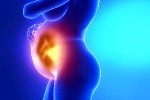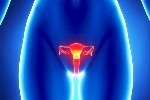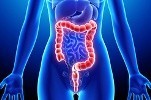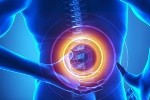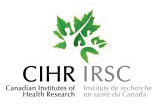Carpal Tennel Syndrome
Carpal tunnel syndrome (CTS) is the most common of the entrapment neuropathies [1] . It represents the compression of the median nerve within the carpal tunnel.
The borders of the carpal tunnel are wrist carpal bones on the medial, lateral and dorsal aspect and the transverse carpal ligament on the volar aspect. The median nerve and nine of the finger and thumb flexor tendons pass through this space.
CTS is characterized by symptoms of numbness, tingling and paraethesias, which are not always limited to the median nerve distribution. Individuals with CTS tend to initially present with intermittent symptoms that may be worse at night or with repetitive upper-extremity activity. The symptoms may improve with splinting, repositioning or vigorous shaking of the hand [3-6] .
Physical examination findings in more involved cases may present with neurologic deficits, including impaired sensation, two-point discrimination in the median nerve distribution or thenar weakness.
Milder cases may only present with positive carpal tunnel provocative maneuvers (e.g., with Phalen's test and Tinel's sign) with normal neurologic examination findings.
Nerve conduction studies (NCS) are frequently performed for confirming the diagnosis of CTS. Conservative treatment may include physical therapy, bracing, steroid injections and alternative therapies. However, surgical decompression (carpal tunnel release) is often elected.
While the reported incidence and prevalence of CTS varies widely based on the diagnostic criteria and study methods, it does appear that repetitive trauma disorders and CTS are increasing [1] .
Prevalence of CTS in the general population can be difficult to estimate and is frequently reported in specific groups [7] . A Swedish study found that 3.8% of the population have a clinical diagnosis of CTS, and 4.9% have electrophysiologic evidence. A total of 2.7% of the population were found to have both [7] . CTS of a severity indicating surgery has been found in 0.7% of a general population [8] . In the general population, CTS prevalence has been estimated at 3.72% in the USA and 5.8% in The Netherlands [1,9] .
The incidence of CTS in The Netherlands has been reported at 1.8 per 1000 people, with a female:male ratio of 3:1 and the highest rates in the 45-64-year-old age group [10] . Women are susceptible to
the syndrome, and have been demonstrated to progress differently from males [11] . Blue-collar workers and housewives have been demonstrated to have an increased risk of CTS requiring surgery [12] .
Manual labor, exposure to vibratory tools and repetitive flexion and extension of the wrist combined with gripping have been reported as risk factors for CTS, while the risk from using a computer
mouse or keyboard is unclear [13-15] .
Surgical decompression has traditionally been considered the definitive treatment for CTS. The most common hand surgery in the USA is carpal tunnel release, with 200,000 procedures carried out each year [16] . Surgical treatment appears to be more effective for the symptoms of CTS than splinting, which has been the mainstay of conservative treatment [17] .
In order to evaluate the effectiveness of nonsurgical treatments for CTS, an understanding of the efficacy of surgical treatment, as well as the natural progression of untreated CTS, is beneficial.
Natural History
Electrophysiologic measurements are an integral component of the diagnosis of CTS and provide an objective measurement of the function of the studied nerve. The progression of electrophysiologic characteristics of the median nerve in CTS has had limited investigation with varied results [11] .
The initial severity of carpal tunnel symptoms is not a reliable predictor of continued progression. Studies have had varied results when individuals are stratified into groups based on the severity
of their symptoms at the initial evaluation. Padua et al. prospectively followed 274 untreated hands for 10-15 months with patient-oriented evaluations as well as electrodiagnostic evaluations. They
investigated several different outcome measures, including pain, clinical history and physical exam, self-reported symptoms and electrophysiologic findings [19] .
Approximately a quarter of cases improved, a quarter worsened and half stayed the same. There was a tendency for those with initially mild symptoms to deteriorate, while severe cases improved over the course of observation. Spontaneous improvement was noted with shorter duration of symptoms and in younger subjects. Poorer outcomes were found in those with bilateral symptoms and a positive Phalen's test [19] .
Karsidag et al. followed 28 hands, with varying degrees of CTS. Evaluations by NCS were performed every 12 weeks for 1 year. All subjects received conservative therapy (bracing) during the trial.
Mild cases saw no change, moderate cases saw significant improvements and the severe cases were too few in number to make relevant comparisons [11] .
A retrospective review of nonsurgical NCS-confirmed CTS cases followed 261 hands. The average follow-up time was 47 months. The majority of the group had progression of their symptoms (54.9%), while
a notable percentage improved (34.3%), and only a few were stable (10.8%) [20] .
A total of 157 subjects with CTS with positive electrodiagnostic findings were reviewed retrospectively. Of the 72 subjects without surgery, 32% showed improvement compared with 86% of the 85
subjects that improved with carpal tunnel release [21] . A total of 132 subjects with CTS were followed for an average of 2 years and were treated without surgery, injections or braces. Upon
evaluation, 47.6% improved with respect to history and examination findings, and 25% improved with respect to NCS. Only 23.4% clinically and 7.6% electrophysiologically worsened [22] .
In many of these studies, it is unclear how much of the 'natural history' is actually the self-imposed intervention of activity modification secondary to CTS symptoms. Padua et al. monitored hand
stress, which was defined as activities with repetitive hand-wrist action, hard manual work, sporadic hand stress or trauma. They found that 68% of subjects decreased their hand stress and 32%
altered their work or hobby hand activities after the diagnosis of CTS [19].
Contact Us
Chalmers Medical Building
328 Hwy 7 East Suite 201,
Richmond Hill ON L4B 3P7
Tel: 416 399-3888
E-mail: info@aahclinic.com
Conditions Treated
Effective Herbal Therapy for Inflammatory Bowel Disease
NO Surgery!
Carolyn XU Treats Ulcer Colitis Successfully
Considering Therapy?
Resource Links
References
Donation
Great things happen when you put your heart into it.
Click Here to Send us your request
Tips
Questions about your first appointment or if your insurance will cover the cost? Find more information below.


